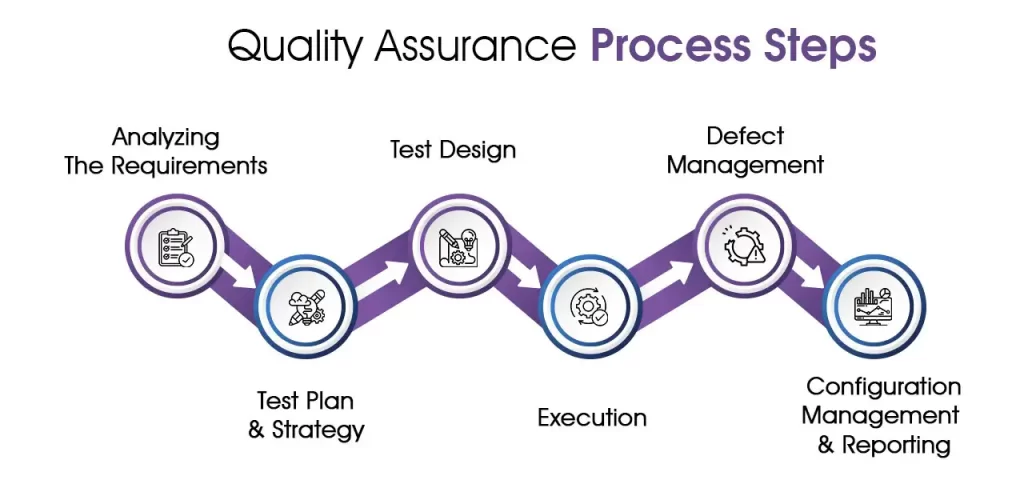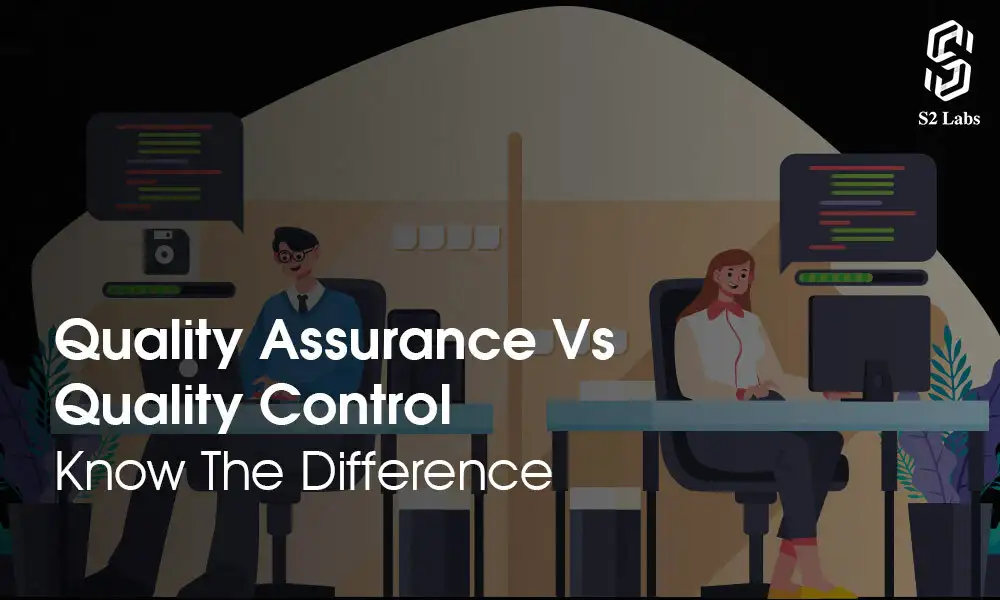Any product has to undergo a series of tests before being made available to consumers, and software is no different. The quality assurance process in software testing is testing the software’s or the application’s quality to ensure it is fit for deployment.
The method may include some crucial steps, which we will discuss in detail in this blog. It ensures that the software fits the organization’s standards and that the defects or errors that may occur are reduced significantly.
From planning the test to reporting the product’s performance in these tests, the QA engineers take care of everything. So, let’s explore what the quality assurance process is and how you can implement it in your software development lifecycle.
What is the Software Quality Assurance Process?
In the software development lifecycle, the developers design and write the code as per the software’s requirements. This code is often tested during development to determine if it meets the organization’s quality standards or the expected product. This process of testing the software is the quality assurance process.
It aims to identify and prevent potential issues, such as bugs, that may occur throughout the development lifecycle. Hence, the quality assurance process is ongoing. The main motive of this process is to provide the highest quality product that is reliable and meets the requirements for customer satisfaction.
We will dive deeper into the steps of the quality assurance process to understand the execution process of QA testing.
Software Quality Assurance Process Steps
The process of assuring software quality is ongoing, as we mentioned before. Throughout the development phase and beyond, a team of QA engineers works to assess the product quality. To execute this strategy, a series of carefully planned steps are followed. We will now discuss the Software Quality Assurance Process Steps to help you understand the concept better.

1. Analyzing the Requirements
The first step in the quality assurance process is to analyze the project’s requirements—this overview of the functional and non-functional aspects that must be assessed. As fixing a bug at the initial stage of development costs less than the production stage, the QA team is involved from the very beginning in understanding the quality standards and devising a strategy for testing.
2. Test Plan and Strategy
The next step is to plan. After carefully evaluating requirements, the team gets to panning out the strategy for the quality assurance testing process they will implement. This plan is based on the standards of the product that is being developed. It is important to remember the testing strategy, budget, scope, and deadlines while planning. It should also contain details on the testing instruments and the necessary testing kinds and levels. Additionally, the test manager will assign tasks to specific testers after completing the test plan.
3. Test Design
Designing is the step where all previous planning is used to create test cases based on the organization’s requirements. It includes proper steps through which the software will be tested. It also states the conditions and data to confirm the product’s functionality. An expected result data is also assumed to compare the actual results and predict the changes. Automation tests scripts will also be created if automation is included in the strategy.
4. Execution
In the execution stage of the quality assurance process, the QA team carries out the tests at the functional and non-functional levels. Manual or automated tests are conducted as required based on the test cases designed in previous stages. A staging environment that resembles the production environment is maintained to ensure accurate testing conditions.
5. Defect Management
The defect management stage is where the bugs are finally identified. These are then reported back to the developer team for resolution. Once the developers resolve the bug, the QA re-runs the test to ensure thorough validation of the solutions. They also do regression tests to ensure the fixes haven’t had any detrimental effects on the functionality already in place. By ensuring that issues are appropriately addressed, defect management makes it possible to create software that is both high-quality and free of bugs.
6. Configuration Management & Reporting
Configuration management monitors and regulates changes to software configuration elements throughout the development lifecycle. Version control, change management, and ensuring the consistency and integrity of the product are all included. Maintaining a steady and controlled atmosphere lessens the dangers of improper or illegal alterations.
Deriving actionable insights from testing, metrics, and reporting entails obtaining and evaluating significant data. Test coverage, defect density, test execution progress, and other performance indicators are some of these measures. They give insight into the software’s quality, facilitating ongoing development and well-informed decision-making.
The QA teams must follow the complete quality assurance process steps. Of course, these can be personalized per the organization’s requirements and standards.
How to Improve the Quality Assurance Process?
From cost-saving to time management, there are various reasons why you should be implementing better quality assurance measures. Here are some ways in which you can significantly improve the quality assurance process in your organization.
- Establish Standards: Set clear quality standards and acceptance criteria for different aspects of your software (functionality, performance, usability, etc.). These act as benchmarks for testing and evaluation.
- Choose Testing Methodologies: Select appropriate testing methodologies based on your software type and needs (functional testing, non-functional testing, automation testing).
- Invest in Automation: While manual testing remains crucial, consider automating repetitive tasks to improve efficiency and free up resources for exploratory testing.
- Integrate QA Throughout Development: Don’t wait until the end; integrate QA activities throughout the development lifecycle (SDLC) from requirement analysis to deployment.
- Conduct Testing: Execute your designed test cases using manual testing, automation tools, or a combination.
- Track and Manage Defects: Establish a system for logging, tracking, prioritizing, and send identified bugs and issues for resolving.
- Communication and Collaboration: Ensure clear communication and collaboration between testers, developers, and other stakeholders throughout the testing process.
Benefits of Quality Assurance
There is a great deal of gain from implementing a well-organized quality assurance (QA) procedure. It will improve your product’s quality, raising consumer happiness and loyalty. Here are some of the benefits of Quality Assurance:
- High-quality software is produced with SQA in less time, money, and resources.
- SQA enhances communication within and between teams by outlining an appropriate plan for the testing procedure.
- Rather than waiting until the conclusion of the SDLC, it emphasizes the flaws at each development process level.
- SQA provides top-notch items that boost the business’s market share.
- Because SQA ensures that the product is released correctly the first time, maintenance costs are reduced.
- SQA improves product security by finding and resolving problems in individual product components before addressing more significant issues.

Conclusion
Building a high-quality software product requires a well-defined and well-executed Quality Assurance process. By understanding the key steps involved, from setting goals to continuous improvement, you can ensure your software is thoroughly tested, meets user expectations, and delivers a positive user experience.
Remember, a robust QA program isn’t just about finding bugs – it’s about proactively preventing them and ensuring your software functions as intended. From planning the process to conducting tests and monitoring the product post-release, every step is crucial. You can learn how these steps work with the help of QA Training to improve your organization’s quality assurance process.















































